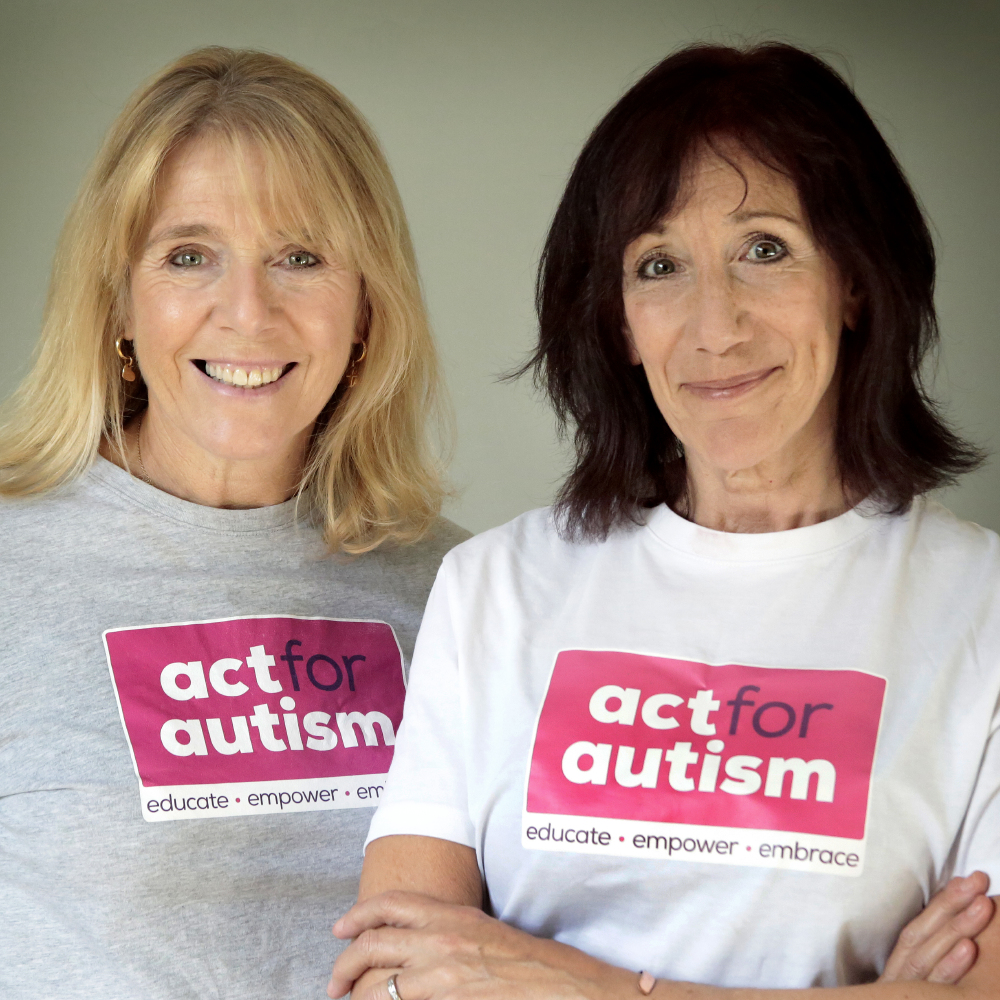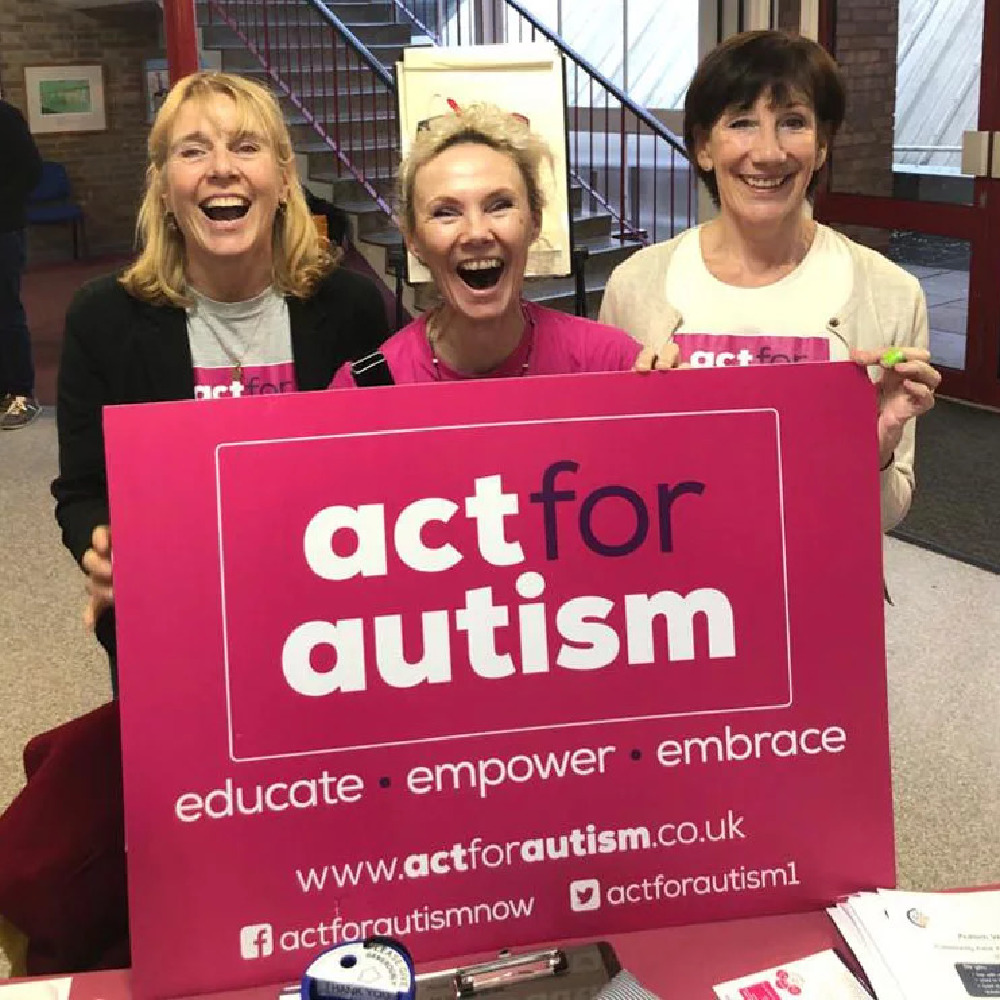While enjoying a successful acting career with starring roles in TV shows such as The Bill, Diezel, Pascoe and The Girl With The Pearl Earring, Jane Gurnett was also raising a daughter with Autism. Having recently published Communicated and Connecting With Your Autistic Child with Tessa Morton, co-founder of Act For Autism, Jane explains what the book offers parents of children with autism and why they felt it important to write about it.

Jane Gurnett and Tessa Morton campaigning for 'Act for Autism'
Tessa and myself are both working mothers with successful careers in acting, teaching, counselling and presenting, but neither of us could have pursued these careers without the support of, in Tessa’s case, her husband and in mine, a wonderful woman called Brenda Pedley who cared for my daughter, whilst I was at work, she retired when my daughter was 12 years old. As a single mother I simply could not have kept working as an actress, the unsociable hours and travelling away from home, would not have been possible without that continuity from Brenda. In these ways we are privileged, not everyone has the support that we have had.
Raising children is the most difficult and rewarding job in the world, and one that no one can really prepare you for. Raising an autistic child is no different, but you do have to go on a voyage of discovery that not everyone will go on. You learn by experience, a lot of sleuthing, researching, and getting it wrong. It is also arguably more challenging because of the historical narrative, mistruths and received perceptions around autism and neurodiversity. Things are getting better, for example the term autism spectrum disorder has been challenged and replaced by autism spectrum condition and the National Autistic Society in consultation with autistic advocates now describe it as a different way of seeing, feeling and perceiving the world.
Our book was born out of our collective and very different experiences. We are both passionate about our work and our fantastic children, who have taught us everything we know, along with all the other children and young people we have worked with.
Research tells us that many parents of autistic children suffer anxiety, and the pressures of other people’s perceptions can also be difficult to handle. Anxiety is something that comes up time and again in our parent training at Act for Autism and it is something we have also both experienced. Tessa learnt early on that her son was often calmed by the presence of their dog, Honey, who would stay alongside him when he was in extreme anxiety, her son would pat Honey and Honey would calmly wag her tail. She jokes that she realised she had to ‘be more dog’. I realised that my constant busyness was not helping my daughter and my inability to hold a silence was distressing for her.

Autistic children also suffer more anxiety than neurotypical children, due to sensory overload and sensory integration differences. We all know what happens when anxiety is high in a household. When we were approached to write ‘Connecting and Communicating with Your Autistic Child’ one of the things that we knew we wanted to do was create a simple pathway for communication that meant that the child felt secure and seen.
Another misconception is that autistic children choose to present with what is deemed ‘challenging behaviour’, this is not the case, it is a distress signal, a feeling of disconnection with the world, the sensory overload and the environment just becomes too much. That sensory overload can include us, we can become more ‘noise’ as we try to fix and fuss the child. We must connect first, to help to ease that disconnect. Connection happens when we don’t require an immediate outcome. If we take two steps back by calmly connecting with our children before we demand communication, there can be real and positive outcomes. The 3C Pathway and Clear Time require us as parents or carers to empty ourselves of our expectations, throw away our agendas and ‘tune in’ to the energy and rhythms of our children. We must be present, difficult but essential, as our children are hypervigilant, and they know when we are stressed and anxious and they feel it deeply. Once they trust that we are a safe person we can build a secure base for them to communicate their feelings and needs. Everyone wants to feel connected, it’s in our DNA, but for our children it is an absolute necessity if they are to thrive.
Our children are in their twenties and the book we have written is the one that we wish we had read when they were younger. The book includes insights and information on sensory and neurological differences through to the use of drama techniques to help parents and carers ‘walk in the shoes’ of their children but has at its heart ‘The 3C Pathway’ a relational approach, where the change starts with us.
We have included step by step easy to follow exercises and strategies. You can understand cognitively why you need to be more patient and less ‘noisy’, but it’s quite another to be able to do it. Our book will take you on that journey.
Connecting and Communicating With Your Autistic Child by Tessa Morton and Jane Gurnett is available to buy from Amazon.
For more information on Act For Autism and The 3C Pathway, visit www.actforautism.co.uk

